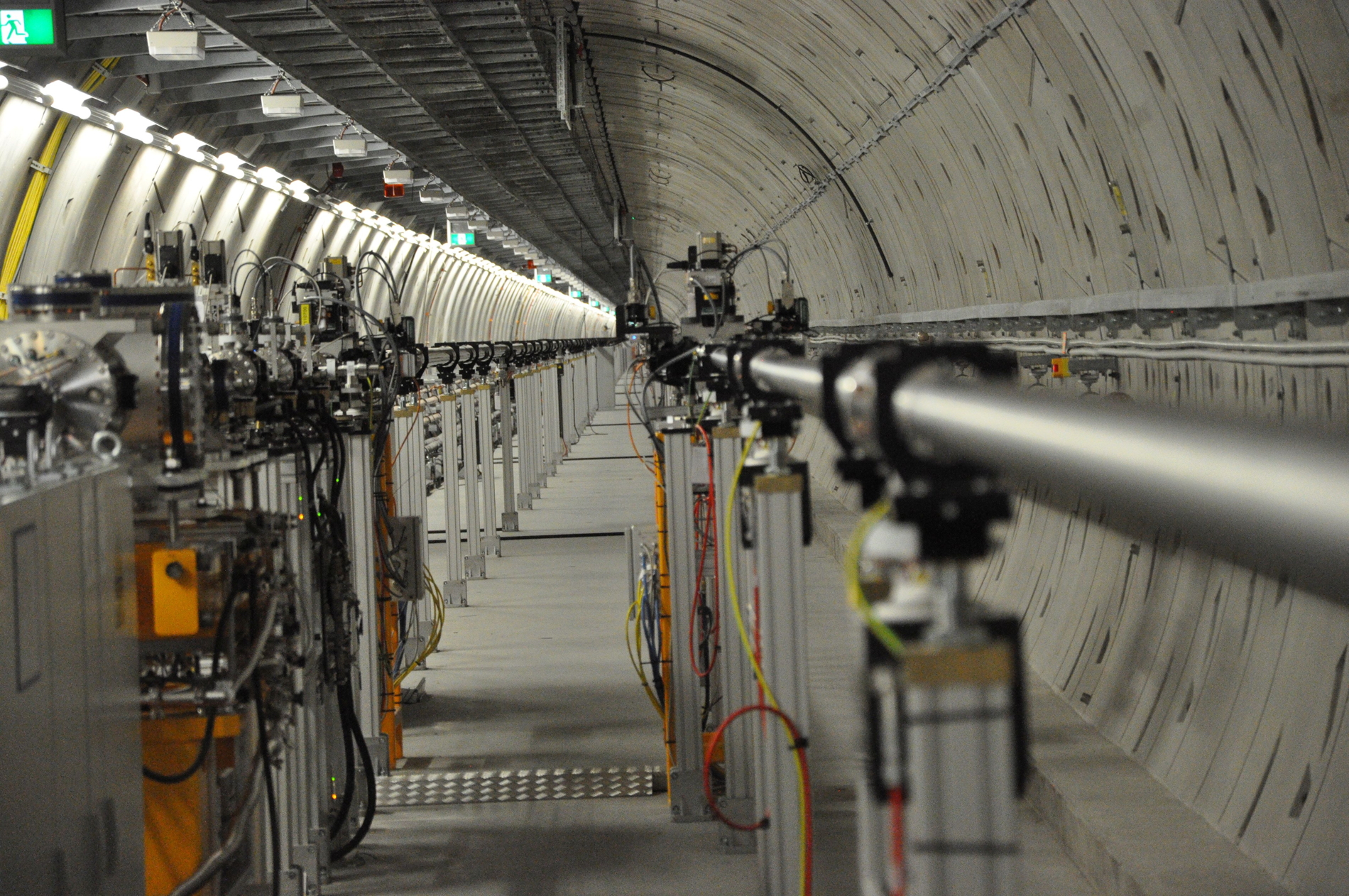X-ray free-electron lasers (XFELs) are novel X-ray sources that provide femtosecond pulses of a peak brilliance that exceeds that of synchrotron sources by nine orders of magnitude. The short duration of the pulses matches the chemical time scale of femtoseconds, allowing the investigation of the dynamics of matter in a time-resolved manner and enables the analysis of highly radiation-sensitive objects. IBS researchers participated in one of the first experiments at the newly built European XFEL in Hamburg, Germany, lead by the Max Planck Institute (MPI) for Medical Research in Heidelberg. This large-scale facility is the first producing XFEL pulses with a MHz repetition rate, to be compared with the 60 and 120 Hz rate of the XFELs at SACLA (Japan) and the LCLS (USA), respectively.
They investigated a microcrystalline preparation of jack bean proteins precipitated with acetone, a preparation described by James Sumner, who used this technique for the first crystallization of an enzyme (urease) in 1926. That work ultimately showed that enzymes are proteins and resulted in a Nobel Prize in 1946. Together with their colleagues of the MPI in Heidelberg, the Universities of Rennes and Lille and others they demonstrated that it is possible to separate the data of the three protein crystals in this mixture (urease, concanavalin A and B) and to determine the structures of the two concanavalins, using data collected at the first MHz XFEL. Furthermore, the consortium showed that under the current operating conditions of the European XFEL, data quality is independent of whether the first or subsequent pulses of the train were used for data collection, i.e. that shockwave- and other effects do not compromise data quality at MHz repetition rates.
These results, published in
Nature Communications on August 28, are of interest to a growing community of scientists interested in using MHz XFELs. In a near future, XFEL technology will become available to many more scientists since the cost of these measurements will decrease greatly as the time spent to acquire the data is reduced. The techniques used in the present work and the underlying physics of operating sequential experiments at MHz rates are directly relevant to other subfields of XFEL science, from physicists interested in extreme interactions between radiation and matter, to chemists focused on ultrafast reactions, and to other scientists interested in “big data” measurements.

View into the 3.4 km long tunnel of the European XFEL.
©IBS/M.Weik